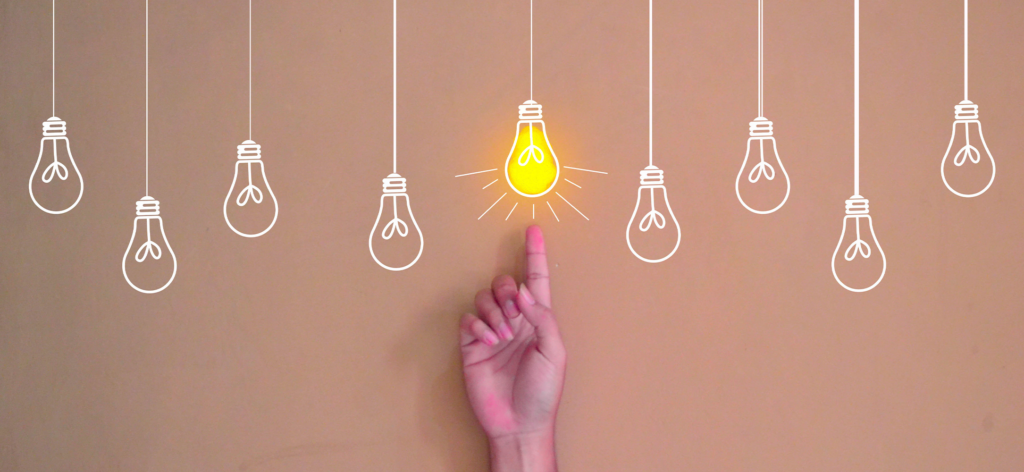The successful innovation team of today goes far beyond technology know-how and agile methods for productivity and collaboration. Organizations must look deeper into cultivating critical innovation roles that represent all functions of the business, and how they work together to push digital transformation forward.
But, that’s not such an easy task. It’s one thing to get someone with the right skills and background on board. It’s quite another to make sure they have the personality and capabilities to be an innovator at your company.
So, what are the different types of innovators out there, and how do they map to the new types of critical roles that are needed to succeed in the modern, data-driven business world?
What Are the Different Types of Innovators?
Harvard Business Review recently asked over 100,000 respondents to tell them about their problem-solving perceptions and capabilities in a large-scale study on innovation. Based on the answers they received, researchers found that an individual’s preferences group them into one of four innovation types, or styles.
These innovation types include:
- Those who are good at finding new problems, called generators;
- Those who excel at thoroughly defining problems, called conceptualizers;
- People who are good at evaluating ideas and selecting solutions, called optimizers;
- And, those who excel at implementing solutions, called as you may expect, implementers.
If leaders can get a more complete understanding of their employees, not just of their technical skills, but their particular style of innovation, they will be more effective at achieving success in all their innovation efforts.
The Four Innovation Types
1. Generators
According to the Harvard Business Review innovation study, one of the rarest types of innovators is the Generator. These are people who excel at finding new problems, and identifying them based on their real-world experiences. They tend to think at the 10,000 foot-level, and do not typically get involved in the nitty-gritty, or how you actually get something done.
The study found that only 17 percent of participants were Generators, with 19 percent being executive managers; 18 percent middle managers; 15 percent supervisors; and 16 percent non-managers.
Generators are so rare that it is incumbent on leaders to ensure they have one on their innovation team. Based on the study results, there is a 71 percent chance a four-person team from an innovation department has no Generators.
2. Conceptualizers
Conceptualizers are the next innovation type, and are skilled at defining a problem and understanding it through analysis, rather than direct experience. Unlike Generators, Conceptualizers like to model a problem clearly, and in detail, to come to a solution.
Conceptualizers are almost as rare as Generators. They make up only 19 percent of the participants in the HBR study. They make up about 17 percent to 18 percent of non-managers, supervisors, and middle managers. It’s executives that make up the most conceptualizers, at 25 percent. This makes sense, since executives typically work on strategic planning for longer-term goals.
3. Optimizers
Optimizers excel at evaluating ideas, and suggesting solutions. Optimizers prefer to logically examine all alternatives so they can implement the best possible solution. This group typically makes up mid-level management and lower occupational roles, with 27 percent being non-managers, 23 percent supervisors, 22 percent middle managers, and 20 percent of executives.
4. Implementers
Implementers are the type of innovator that executes on ideas and solutions. They are action takers – they like to experiment with new solutions, and make adjustments based on these experiments.
Implementers are the most common innovation type, representing 41 percent of the HBR survey respondents. Thirty-six percent of executive managers are implementers, 41 percent are non-managers, 44 percent are supervisors, and 43 percent are middle managers.
It’s clear that hiring managers and HR need to think more cohesively about the people they hire to ensure they get the right mix of innovators on their teams. But emerging roles are moving companies forward in terms of innovation, and will help your brand differentiate from your competitors?
What are Critical Roles Needed for Innovation?
Innovation has evolved over the past decade to increasingly be tied to data-driven business planning, customer-centric marketing methodologies, and technology-driven automation and optimization. While companies can begin to look at the softer skills that help supplement forward-looking thinking, nothing is going to replace the skills and more dedicated roles that support innovation across the enterprise.
Data Roles
Data has become the life blood of the modern company. Data helps businesses understand their customers better, and generates business value in the form of business efficiency, and elevated customer experiences.
The types of employees that will be needed to support a data-driven organization ranges from people who analyze data, to people who architect large databases, and data scientists that help offer data-oriented solutions to solve business problems.
Innovation roles include:
- Chief Data Officer (CDO)
- Data Analyst
- Data and Analytics Manager
- Data Architect
- Data Engineer
- Data Scientist
AI Roles
Artificial intelligence (AI) has become real-world technology for businesses to use for a variety of applications and benefits. Companies are using AI and machine learning (ML) to optimize their business operations, save time on mundane tasks, make smart technology solutions, and empower companies with actionable AI-powered insights.
In order to get maximum value from AI, you are going to need the right AI team with a wide range of AI/ML skills. Some of the roles here will overlap with the data area, like the need for data scientists to process and analyze data, build ML models, and optimize existing models. But others are germane just to AI/ML, like the ML engineer who implements the ML models that data scientists build. AI designers work with developers to ensure AI systems meet the needs of actual humans. An exciting new emerging role is the Chief AI Officer, who leads decision making on all AI initiatives, and ensures AI efforts map to business goals and objectives.
Innovation roles include:
- Chief AI Officer
- ML Engineer
- AI Designer
- AI Architect
- AI Engineer
- AI Strategist
AI in Marketing
According to Paul Roetzer, founder and CEO of the Marketing AI Institute, marketing teams have incredible opportunity to shift their mindset towards implementing AI into their skillset and workflow. Dubbed “next-gen,” marketers, these employees are more experimental, and unafraid to take risks with new technology.
“Next-gen became a way for us to differentiate someone who embraces how quickly this stuff is changing, and the fact that there is smarter technology out there,” Roetzer said. “It’s more of a mindset of just embracing what AI enables, and not hiding from it because it’s abstract, or scary or overwhelming.”
Customer Experience Roles
Customer experience (CX) is one of the key differentiators modern brands can establish today to stay ahead of their competition. Customers want a relevant customer experience that delivers value.
CX teams continue to incorporate have roles like insights and analytics, voice of the customer, design and processes, and engineering. A large part of the team’s responsibility is to analyze customer touch points across the customer journey.
CX teams are becoming more important than ever and are core departments in any data-driven, customer-centric company. Customer experience teams are on the frontline of innovation as their organizations create new products based on the evolving needs of their customers.
Innovation roles include:
- Chief Customer Officer
- VoC (Voice of Customer) manager
- Experience Design Manager
- Customer Advisory Board
- Customer Journey Manager
- Customer Success Manager
Conclusion
Innovation today is no longer about feel-good slogans and collaborative processes – that has already been well-established. Today, companies that want to be successful at innovation will thoughtfully map the two dimensions of innovation together; the style or type of innovator personality, and the skills needed to do modern, technology-driven innovation.
It will be up to the leadership, hiring managers, and HR to collaborate to improve hiring processes to include questions that will evaluate potential for innovative behavior. The big challenge will be finding more innovation generators and conceptualizers, and getting them to assist in visualizing a better tomorrow through technology and technology-driven processes.



